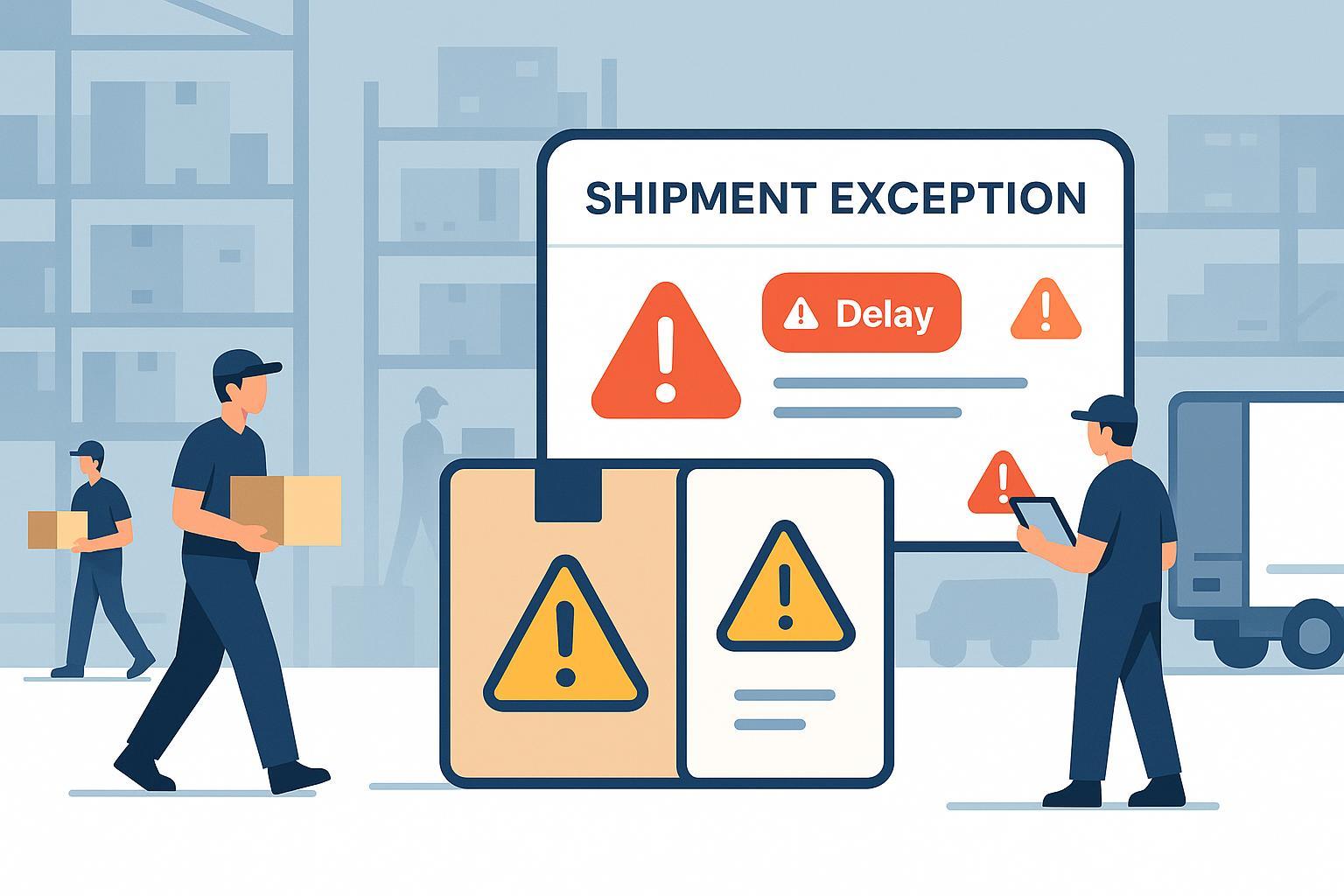Understanding Shipment Exceptions: What They Are and How They Affect Your Deliveries

What Is a Shipment Exception?
A shipment exception refers to any unexpected event or disruption during the shipping process that prevents a package from being delivered on time as planned. Common causes include incorrect addresses, severe weather, damaged goods, customs holds, and technical or labeling errors. As leading industry guides explain, a shipment exception is “an event in the delivery process that interrupts, delays, or requires special handling of a parcel, resulting in the shipment not arriving as scheduled.”12
Typical Causes and Types
The most frequent shipment exception scenarios include:
- Address errors: Incorrect, incomplete, or hard-to-locate addresses
- Weather events: Storms, floods, or natural disasters impacting transit routes
- Customs delays: Extra paperwork or inspections for cross-border shipments
- Damaged or lost items: Packages compromised or lost en route
- Label and system issues: Mislabeling or IT system failures creating routing problems
| Exception Type | Example | Average Delay |
|---|---|---|
| Address Error | Apartment # missing | 1-2 days |
| Weather Disruption | Snowstorm or hurricane | 1-7 days |
| Customs Hold | Cross-border parcel inspect. | 2-10 days |
| Damaged Package | Broken/soaked parcel | Variable |
How Shipment Exceptions Affect the Supply Chain
Shipment exceptions disrupt the expected flow of goods, resulting in delays, operational bottlenecks, customer dissatisfaction, and extra costs (e.g., reshipment, customer service workload). A single delay can cause ripple effects throughout inventory management, order fulfillment, and customer loyalty—especially in peak seasons such as holidays.
Example in Practice
During Q4 holiday peak, a national retailer experienced widespread shipment exceptions due to snowstorms. Automated alerts flagged affected shipments, allowing proactive customer messaging and alternative delivery routes—minimizing cancellations but increasing costs and customer service pressure for several days.
The Shipment Exception Handling Workflow
Modern logistics operations typically manage shipment exceptions through the following workflow:
- Detection: Automated systems scan for events (failed delivery scan, system alert, carrier notification)
- Notification: Operations teams—and sometimes customers—are alerted
- Categorization: Exception type and urgency are identified
- Response: Steps are taken to resolve (e.g., clarify address, reroute, reschedule, file claims)
- Follow-up: Impact is tracked and supply chain adjustments are made
Simple Process Diagram:
Order Shipped → Shipment Exception Triggered → Alert Generated → Cause Identified (e.g., address, weather) → Operations/Customer Notified → Action Taken → Status Updated/Resolved
Shipment Exception vs. Delivery Exception & Related Terms
- Shipment Exception: Can occur at any stage in the transit process, from warehouse to last mile.
- Delivery Exception: Refers specifically to failed delivery attempts at the final drop-off stage (e.g., “recipient not home”).
- Logistics Delay: A broader term for any slowdown, not always triggered by a specific exception event.
- Carrier Notification: An alert or message from the logistics provider regarding an exception or delay.
Learn more: Delivery Exception, Logistics Delay
Practical Steps for Managing Shipment Exceptions
- Automate exception monitoring: Use software to detect and flag potential issues quickly
- Categorize and prioritize: Tackle high-impact or time-sensitive exceptions first
- Communicate proactively: Notify affected customers as soon as possible
- Analyze root causes: Prevent repeats by fixing process breakdowns (address validation, staff training)
- Continuously improve: Regularly audit exception cases and process effectiveness
Summary
Shipment exceptions are a key challenge in eCommerce and supply chain operations—understanding and managing them can mean the difference between a loyal customer and a lost one. By automating detection, communicating proactively, and addressing root causes, businesses stay agile and resilient.
References: